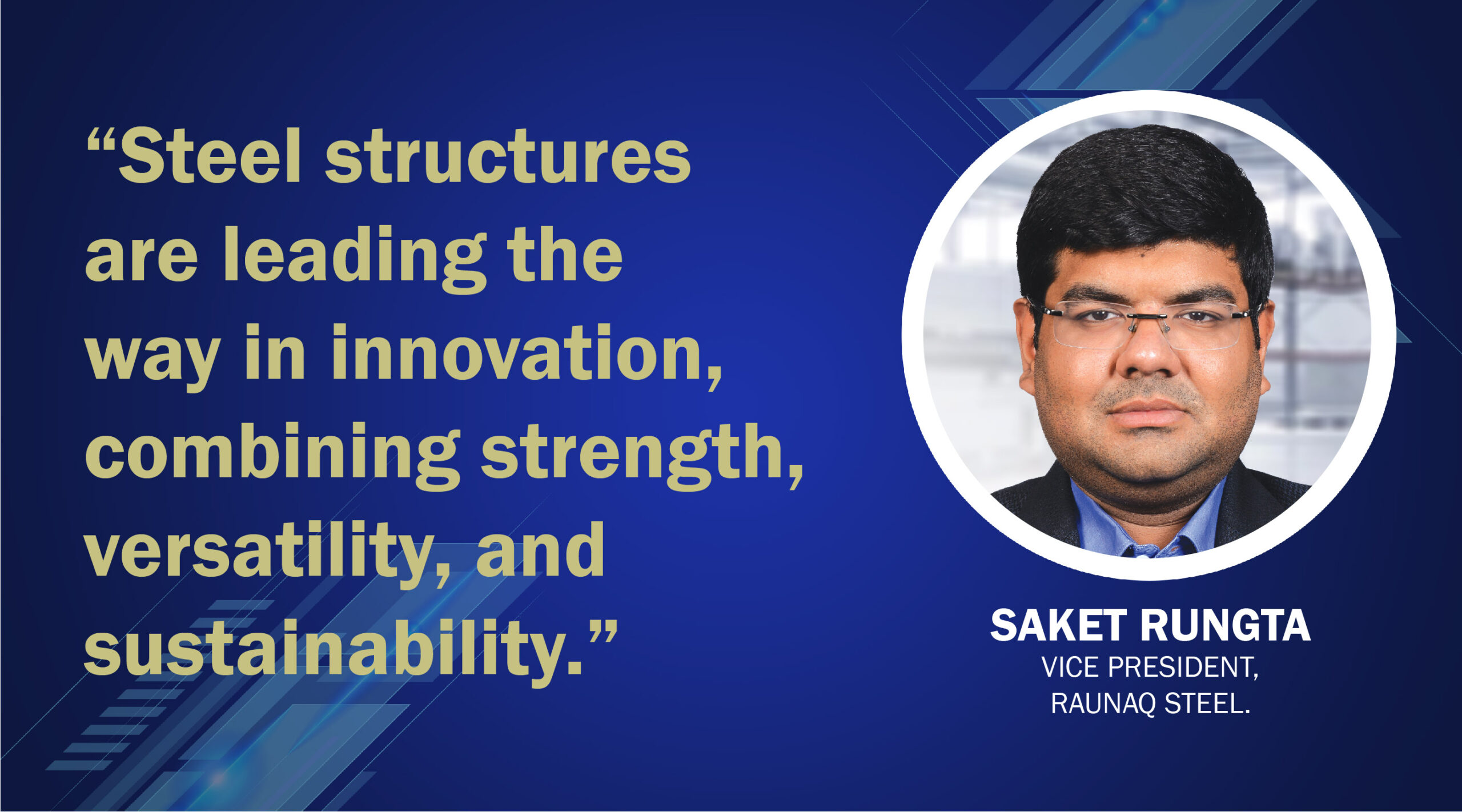Sustainable practices in structural steel fabrication are on the rise

Saket Rungta, Vice President of Raunaq Steel, discusses steel structures’ design, strength, and stability. Let’s explore emerging trends and technologies in this field.
Emerging trends
Revolutionary trends and technologies are transforming the industry in the realm of steel structures. ORC Technology, for instance, converts heat energy into mechanical and electrical energy, reducing water usage and the carbon footprint. The Hybrid Process aims for zero-carbon steel production by replacing coke and iron ore with hydrogen. The Jet Process optimises the chemical energy of coal, enabling higher scrap metal additions without external energy. Molten Oxide Electrolysis simplifies metal production and minimises energy requirements. These advancements drive efficiency, sustainability, and environmental consciousness in steel production.
Recent advancements and innovations
The industry constantly develops new ways to enhance steel’s strength, versatility, and cost-effectiveness. Recent advancements in steel structures have focused on performance and sustainability. Building Information Modeling (BIM) integrates construction management tools, enabling real-time collaboration and reducing delays. Steel manufacturers are reducing carbon content to enhance sustainability. The zero slag process minimises waste and associated costs. These innovations improve efficiency, environmental friendliness, and cost-effectiveness in steel structures.
Key considerations
Apart from notable factors like fire protection and anti-corrosion measures, strength is paramount for steel structure buildings. The design and construction of steel structures should carefully address strength-related issues. The stability of steel structures relies heavily on their deformation. A loss of stability can lead to dangerous situations such as structural collapse, resulting in significant economic losses and safety hazards for personnel.
To ensure stability in steel structure buildings, engaging professional structural engineers and experienced installers is crucial. High-quality steel materials should be utilised, and unauthorised modifications or dismantling should be avoided. Choosing a reputable steel structure manufacturer is also pivotal. These steps contribute to the overall stability and safety of the buildings, enabling them to withstand various challenges effectively.
Sustainable construction practices
In structural steel fabrication and erection, there is a growing trend towards adopting sustainable practices and materials. These initiatives aim to reduce the environmental impact and carbon footprint of structural steel production, fabrication, and erection, while also improving energy efficiency and the life cycle of steel structures. Examples of sustainable practices and materials include:
- Using recycled or renewable steel sources.
- Applying green coatings or finishes.
- Implementing lean manufacturing or construction methods.
- Incorporating renewable energy or green building features
for more info visit : https://raunaqsteels.com/
Cookie Consent
We use cookies to personalize your experience. By continuing to visit this website you agree to our Terms & Conditions, Privacy Policy and Cookie Policy.








